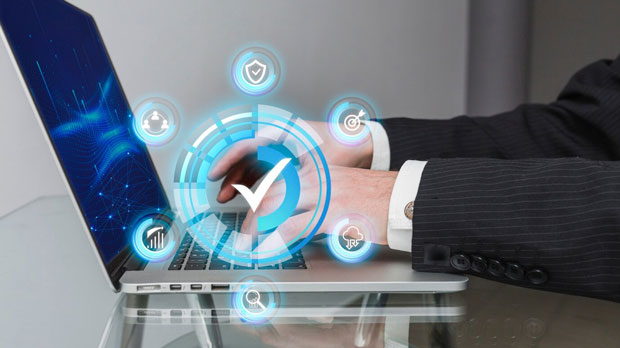Proxy by proxy, in the context of load balancing, refers to a sophisticated method used to manage network traffic by utilizing multiple proxy servers. This intelligent routing technique helps distribute client requests efficiently across a variety of backend servers, ensuring optimal resource utilization and minimizing response times. By analyzing factors like server health, user location, and request type, the proxy by proxy system can dynamically assign requests to the most appropriate server, leading to improved performance and higher availability. This approach plays a pivotal role in modern IT infrastructures, particularly for high-traffic applications and websites that demand seamless user experiences. Introduction to Intelligent Routing in Load BalancingLoad balancing is a critical technique used in modern networks to ensure that resources are allocated efficiently, improving the speed and reliability of services. The goal is to distribute the incoming traffic across multiple servers in a way that avoids overloading any single server. Intelligent routing within this context refers to methods used to determine the most suitable backend server for a given request based on real-time factors such as server health, traffic load, geographic location, and user-specific data. Proxy by proxy routing, which involves routing requests through multiple proxy layers, adds a level of sophistication by using intermediate servers to make these decisions before directing requests to their final destination.How Proxy by Proxy Works in Load BalancingIn a proxy by proxy system, client requests are first routed to an intermediary proxy server, which is responsible for analyzing the request and determining the best server for it to be directed to. This proxy server may consider a variety of factors when making this decision, including:- Server Health: The proxy can check the current health and performance of backend servers to ensure requests are not sent to overloaded or down servers.- Geographical Location: If the client is located far from the primary server, the proxy can route the request to a server closer to the user, reducing latency and improving response time.- Request Type: The nature of the request (e.g., static content vs. dynamic content) may influence which server is best suited to handle it.This process is repeated by each proxy layer, with each one making decisions based on real-time data, until the request reaches the final backend server. The result is a highly efficient routing mechanism that optimizes resource use and performance.Benefits of Proxy by Proxy Intelligent Routing1. Improved Scalability: With proxy by proxy routing, systems can scale more efficiently by adding more layers of proxies or backend servers as needed. This scalability ensures that as traffic increases, performance can be maintained or even improved. 2. Enhanced Performance: By intelligently routing requests based on server health and user location, proxy by proxy routing can significantly reduce latency and response time. This is particularly important for websites or applications that require real-time interactions.3. Increased Fault Tolerance: Proxy by proxy routing increases system reliability. If one server becomes unavailable, requests can be routed to other healthy servers, ensuring uninterrupted service. This level of redundancy is vital for maintaining business continuity.4. Better Resource Utilization: Through load distribution, proxy by proxy helps ensure that no single server bears too much load. This balanced approach ensures that resources are utilized optimally, preventing bottlenecks and ensuring all systems are working at their full capacity.5. Traffic Management: By using proxy servers, traffic can be routed based on specific rules, such as prioritizing certain users or types of traffic. This level of control allows businesses to allocate resources more effectively, providing a better user experience.Challenges of Proxy by Proxy RoutingWhile proxy by proxy routing provides many advantages, there are some challenges to consider:- Increased Complexity: Each additional layer of proxy servers introduces complexity into the system. Managing and maintaining multiple proxies can be resource-intensive, requiring specialized skills and infrastructure. - Potential Latency: Although proxy by proxy routing is designed to optimize traffic flow, the more proxies in the path, the greater the potential for additional latency. If not managed properly, this could negate the performance benefits.- Security Concerns: Adding multiple layers of proxies increases the number of points where data could potentially be intercepted or manipulated. Ensuring that each proxy layer is secure is vital to prevent data breaches and attacks.Implementing Proxy by Proxy Routing: Key ConsiderationsWhen setting up a proxy by proxy routing system, several key considerations must be addressed:1. Proxy Configuration: The configuration of each proxy server is crucial. It must be set up to analyze and route traffic based on the right criteria. Misconfiguration can lead to inefficiencies or even service disruptions.2. Real-time Monitoring: To ensure that routing decisions are based on accurate data, continuous monitoring of both proxy servers and backend systems is necessary. This monitoring should include health checks, performance metrics, and user behavior analysis.3. Redundancy and Failover Systems: Implementing failover mechanisms within the proxy layers ensures that if one proxy server fails, another can take over without interrupting service. This redundancy is essential for maintaining high availability.4. Security Protocols: Security protocols such as encryption and authentication should be implemented at every layer of the proxy system. Ensuring that each layer is secured helps prevent potential vulnerabilities and protects user data.The Future of Proxy by Proxy Routing in Load BalancingAs cloud computing and edge computing continue to grow, the role of proxy by proxy routing will become even more critical. The increasing need for low-latency, high-performance applications will push the development of smarter routing techniques. In the future, machine learning and AI could play a larger role in intelligently determining the optimal routes for client requests, further improving the efficiency and accuracy of proxy by proxy routing systems.Additionally, as businesses adopt more complex multi-cloud and hybrid environments, the ability to route traffic seamlessly across different infrastructure platforms will become essential. Proxy by proxy routing provides the flexibility and scalability needed for these environments, ensuring that companies can maintain optimal performance even in the most demanding situations.ConclusionProxy by proxy routing is a powerful tool for intelligent load balancing, offering numerous benefits in terms of performance, scalability, and fault tolerance. By utilizing multiple layers of proxies to make real-time, data-driven decisions about routing client requests, organizations can achieve optimal resource utilization and deliver a seamless user experience. However, the complexity and potential latency issues associated with this technique must be carefully managed. As technology continues to evolve, proxy by proxy routing will remain an essential component in the arsenal of load balancing strategies, helping businesses meet the demands of modern, high-traffic applications.
Jun 20, 2025



































































